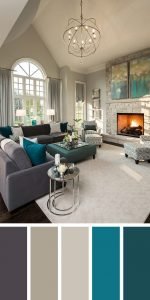The first question when renovating your living room is “What color should we use?” This is a very important question as the colors of the living room can really “make or break” the most important area of your home.
Whatever your choice, keep in mind that you will be spending most of your time there. and you’ll be doing just about any major activity.
Choosing living room colors is never easy. You have to be impressive, yet simple and calm. They must match the size and style of your space and respond to many requests.
We encourage you to properly analyze your space and go through our recommendations for a perfect color scheme.
Look for a color that reflects the mood
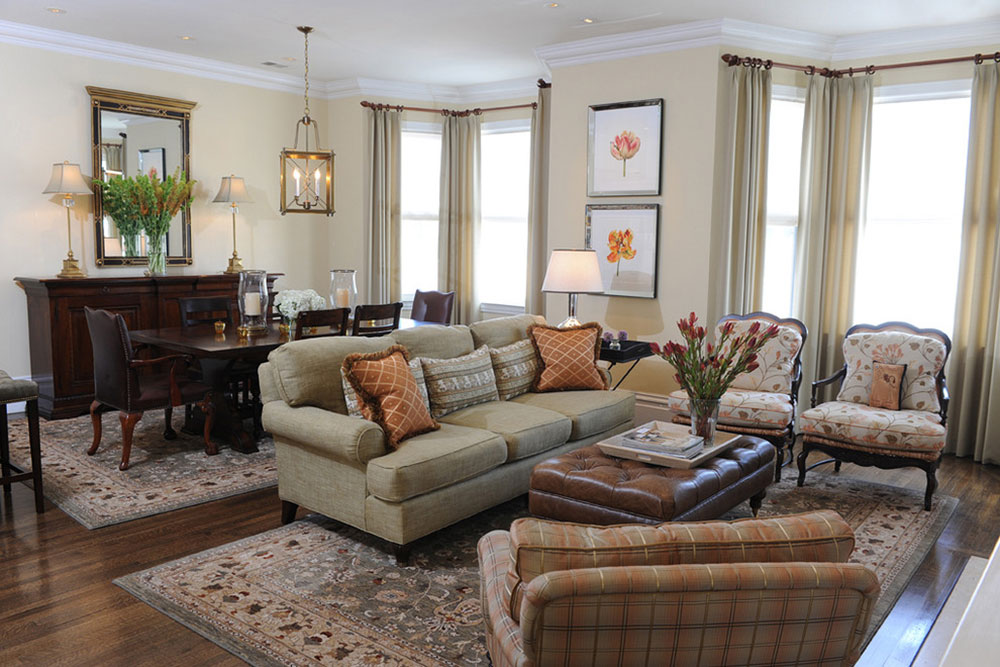 Image source: Brian Dittmar Design, Inc.
Image source: Brian Dittmar Design, Inc.
In terms of shades and nuances, it can be said that there are more than 10 million colors in the world. How do you choose the ideal for your living room? A good place to start is to come up with one that can actually reflect the mood of the room.
If you want your space to be calm and intimate, choose soothing color palettes in neutral colors or lighter shades of gray, lavender, or blue.
Warm colors, on the other hand, create a playful, social and happy spirit. Both extremes (too dark or too light) should be avoided as they can make inmates either moody or restless. You should avoid them especially in places that are frequented by children.
Think of a topic
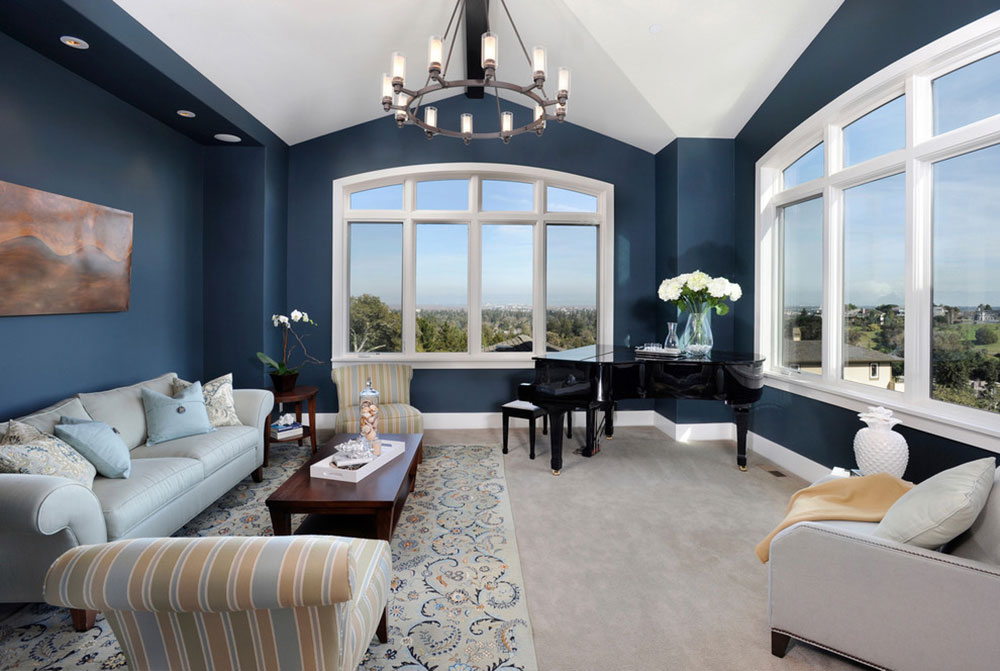 Image source: Sullivan Design Studio
Image source: Sullivan Design Studio
Each of the atmospheres you want to introduce can be assigned to a specific theme. It can either be something general or a specific and unique solution.
For those looking for an elegant and sophisticated decor, deep reds and rich browns are excellent choices. On the other hand, airy and light living rooms could benefit from softer colors, ideally a pastel, nautical scheme combined with dark blue or green.
Let in plenty of sunshine
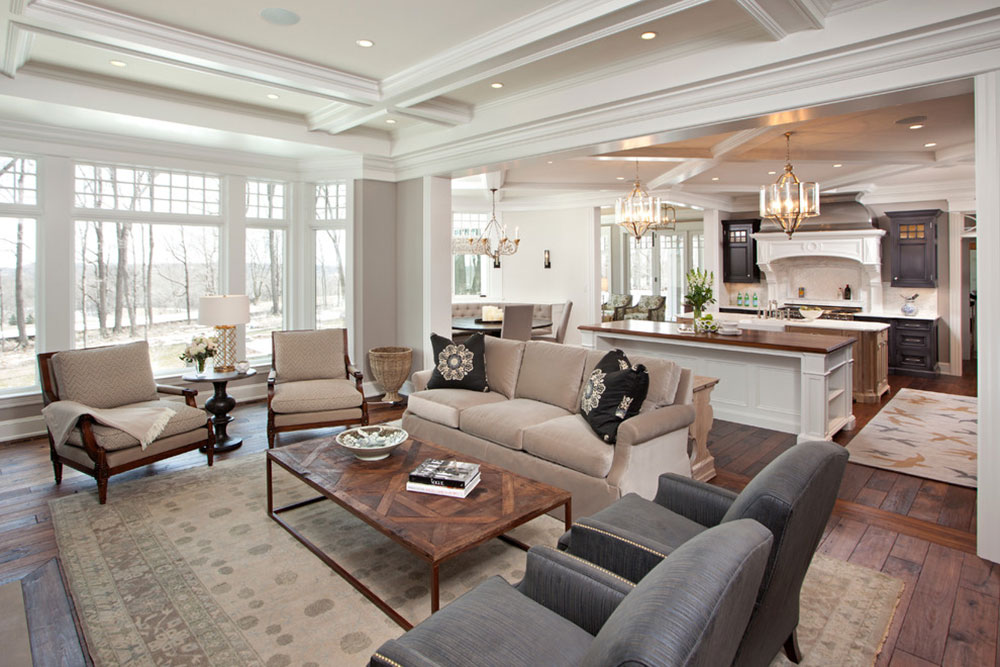 Image source: Eskuche Design
Image source: Eskuche Design
There are many architectural features that can help you bring natural light inside: it could be a large window, a skylight, or even elegant French doors that allow a view of your gorgeous garden.
As soon as your room is so light and airy, we recommend colors that support this “freshness”, ideally earth tones or jewel tones of peacock blue and olive green. A well-lit room can handle even darker palettes.
One solution to avoid is certain shades of yellow: in proper daylight, you already have a lot of golden sheen, and you don’t need a specific palette to get the same effect.
Create your own light
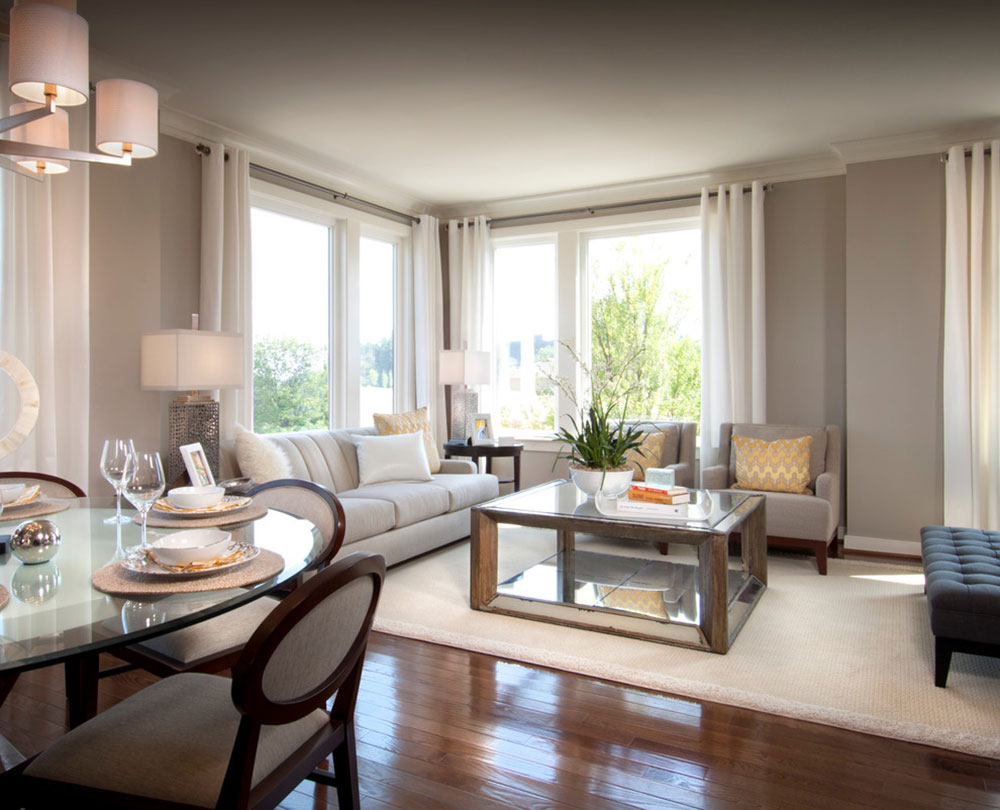 Image source: Carlyn and Company Interiors + Design
Image source: Carlyn and Company Interiors + Design
What if the room doesn’t have large windows or skylights to let the sun in? In this case, you definitely need a light palette.
Creating your own light doesn’t take too much effort: choose smooth shades like pumpkin or ivory. or even more vivid details to make the place cozy and inviting.
Consider size
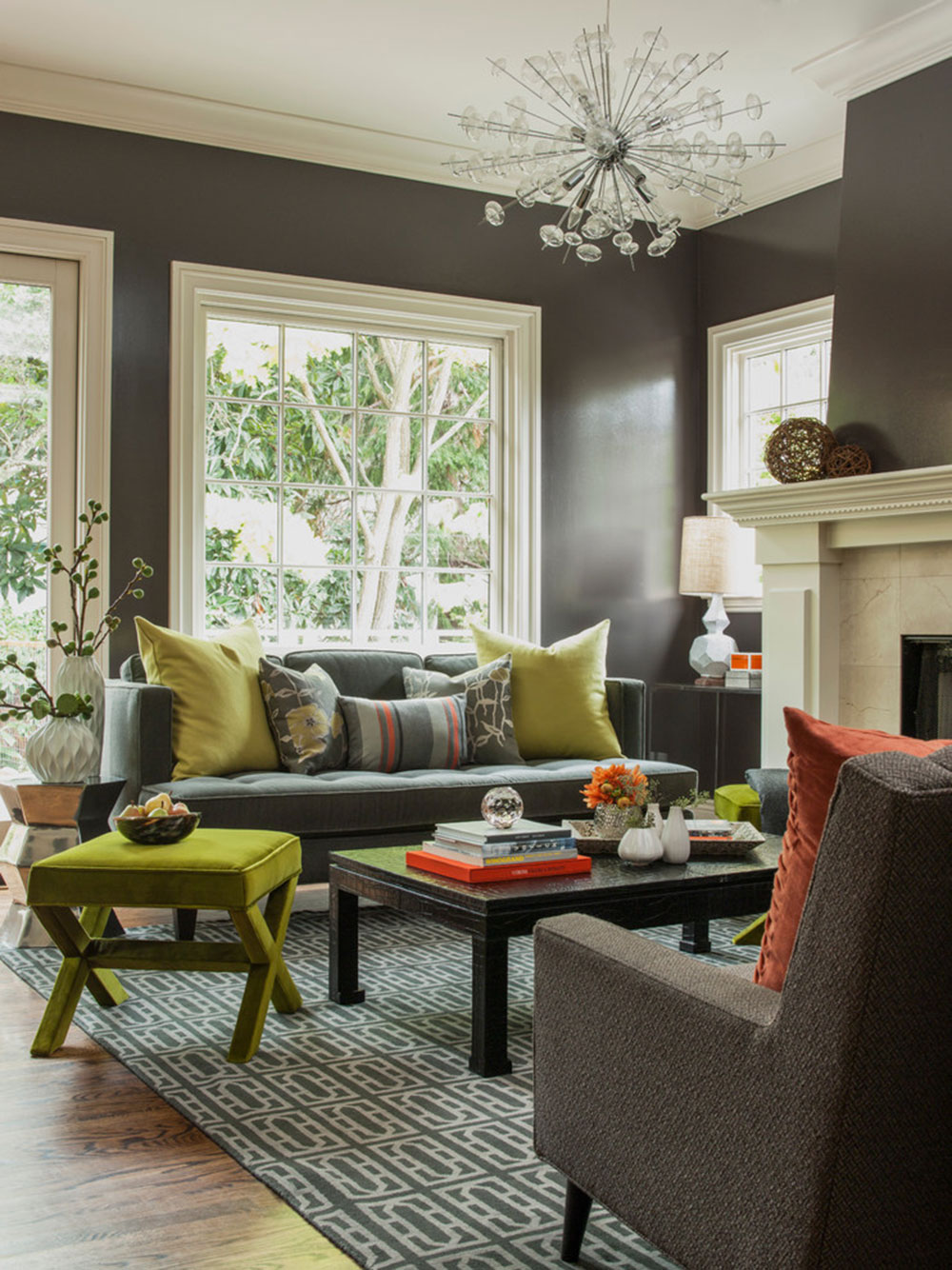 Image source: Ann Lowengart Interiors
Image source: Ann Lowengart Interiors
Dark colors have the visual effect of making rooms appear smaller. Use this to your advantage: add light and flexibility to your small living space (don’t combine more than two colors). or choose a darker scheme for your large room to make it warmer and cozier.
If you’re an absolute fan of dark colors but have a small living room that can’t do that, you can add dimensions by painting a single accent wall.
Color also relates to furniture
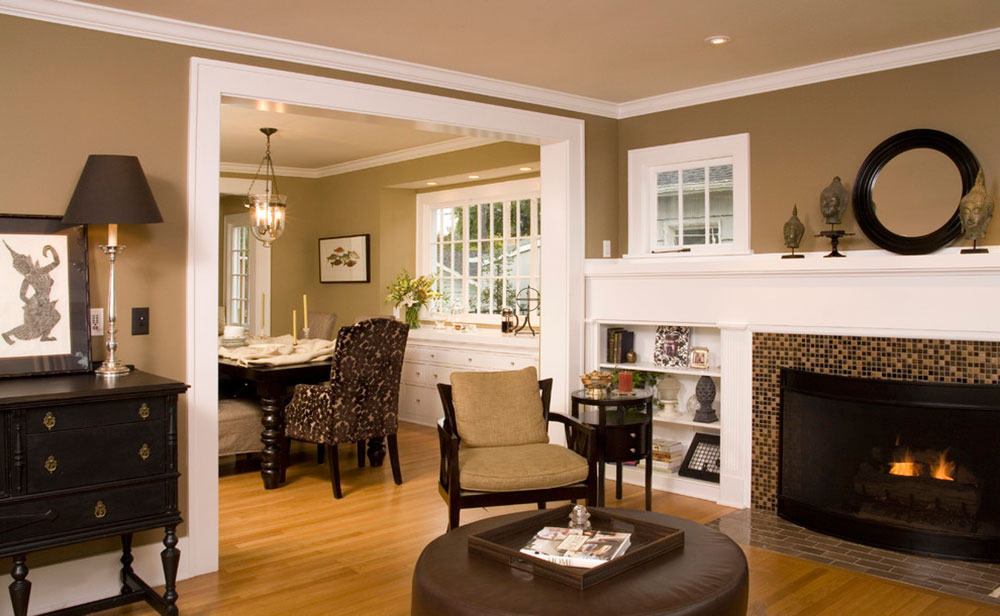 Image source: Kayron Brewer, CKD, CBD / Studio KB
Image source: Kayron Brewer, CKD, CBD / Studio KB
Upholstery colors can really guide your choice of colors. You can either apply matching schemes or use something completely different to get an interesting contrast. The upholstery will also help you choose the floors and curtains.
Then what should you do? We recommend that you either let the colors in the room mix or make a small difference with a single accented object.
Unless you settled on a completely blocking theme, go for something smoother (say, different shades of the same color). A light blue wall can be an excellent choice for a dark blue sofa, especially if your curtains have a certain shade of blue too.
Compliance with the room function
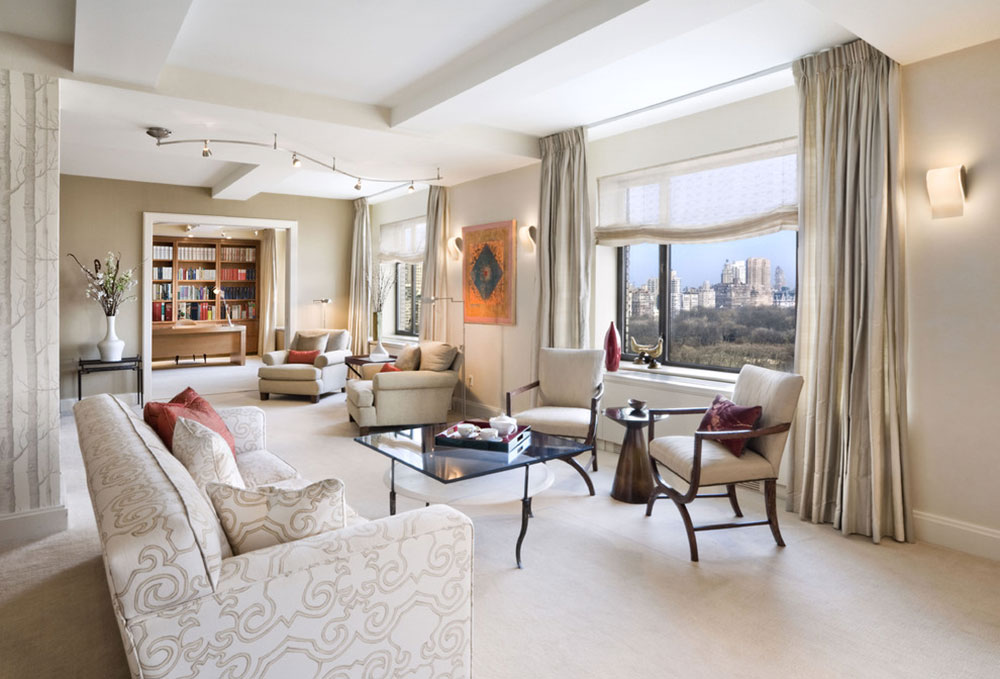 Image source: Vanni archive / architectural photography
Image source: Vanni archive / architectural photography
When choosing the ideal color for your living room, it is important to consider its function. Is it a place where you want to relax and read a good book?
Pale shades are the perfect choice! Do you want it to be a fun area where you and your friends gather? Tones in bold are the best there can be! Either way you watch it, pallets are great camouflage for function!
What are your preferences
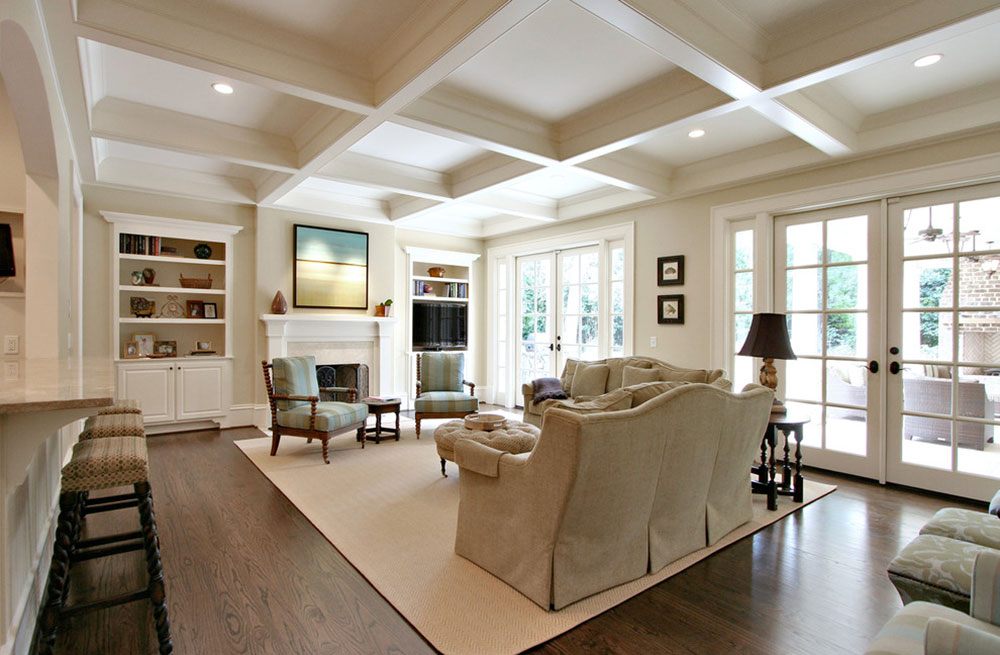 Image source: Dresser houses
Image source: Dresser houses
At the end of the day, it’s your room! Choose colors that have something to do with your personality so that you like and appreciate them.
The same goes for its intensity: would you prefer a light or dark environment? Which one would you choose between red and pink?
Adventure seekers make bold decisions even knowing the space can get overwhelming. If you’re not that adventurous right now, choose an accent wall / element and apply the bold shade of purple that you like so much.
Use the gradation
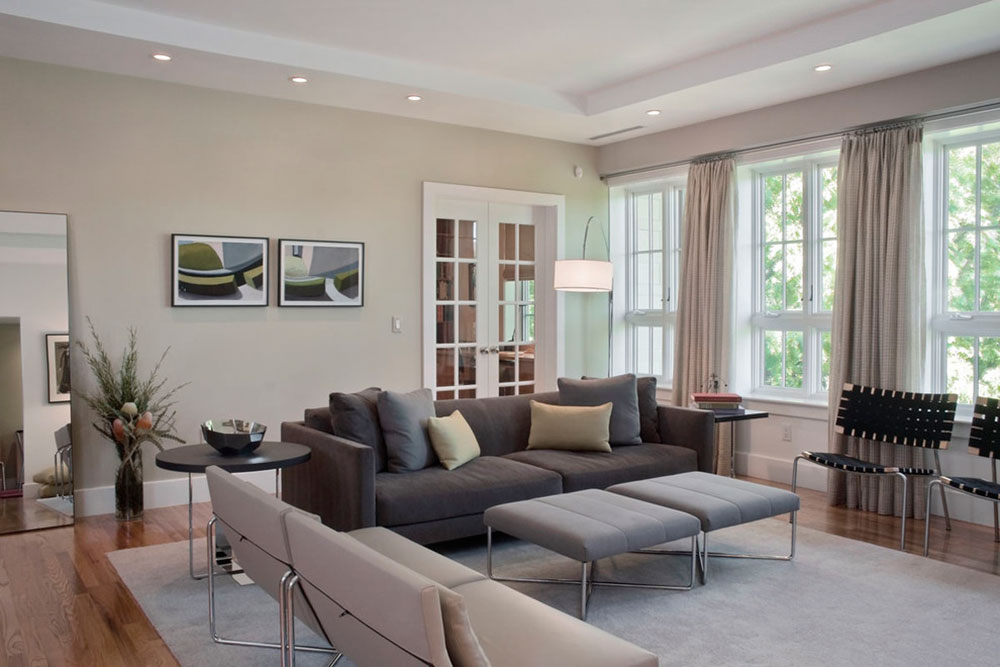 Image source: Giambastiani Design
Image source: Giambastiani Design
Living rooms look great when you use creativity and slowly move from the darkest to the lightest tone. If your floors are dark, make the walls medium and the ceilings light.
This approach is known as the “cookbook setting” and is hugely successful when it comes to replicating nature. Think of a normal natural landscape: the dark hue of the soul, the colorful flowers and the sky … wouldn’t it be just wonderful to have that at home?
Feel free to experiment
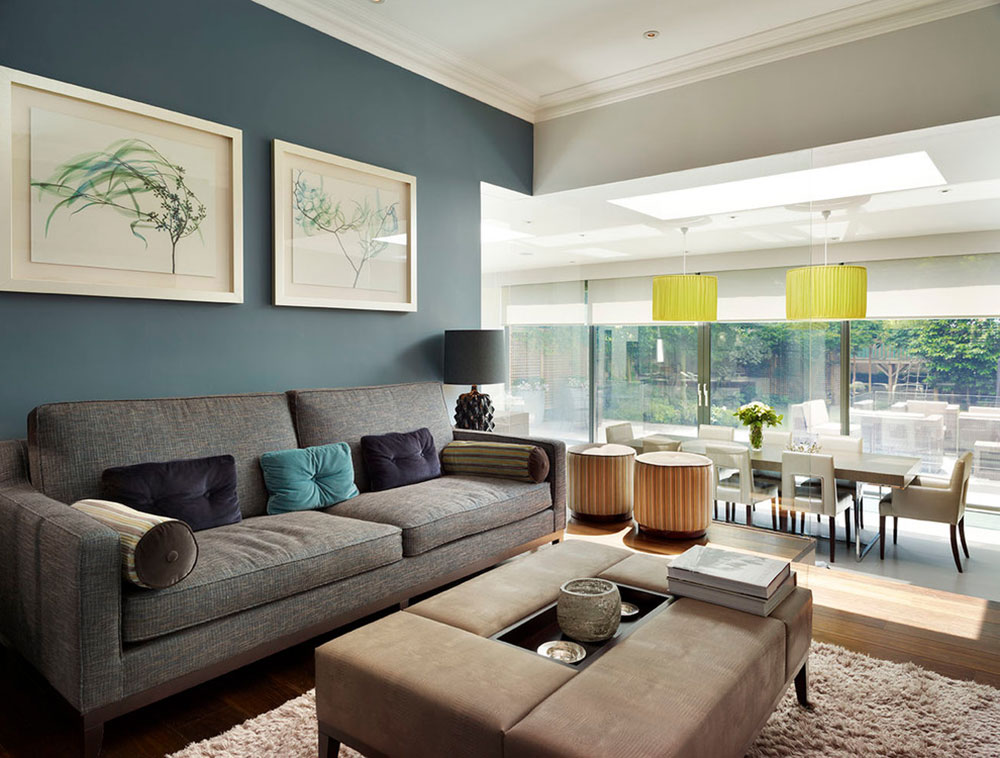 Image source: Genevieve Hurley Interiors Ltd.
Image source: Genevieve Hurley Interiors Ltd.
The first decision you need to make is whether you want a monochromatic scheme (a single color) or a polychromatic scheme that includes all of the colors you want.
You can choose your favorite colors absolutely freely and combine them in an exciting and unique way. Rich combinations always create excitement in your place, as they look very personal and contemporary.
Another good idea is to go for feature walls. This means that you can paint a single wall differently than everyone else, or paint part of each wall a certain color.
You are also invited to create a stark contrast between your walls and your furniture so that your room will be memorable for anyone who comes to visit.
Compliance with your wood / brick elements
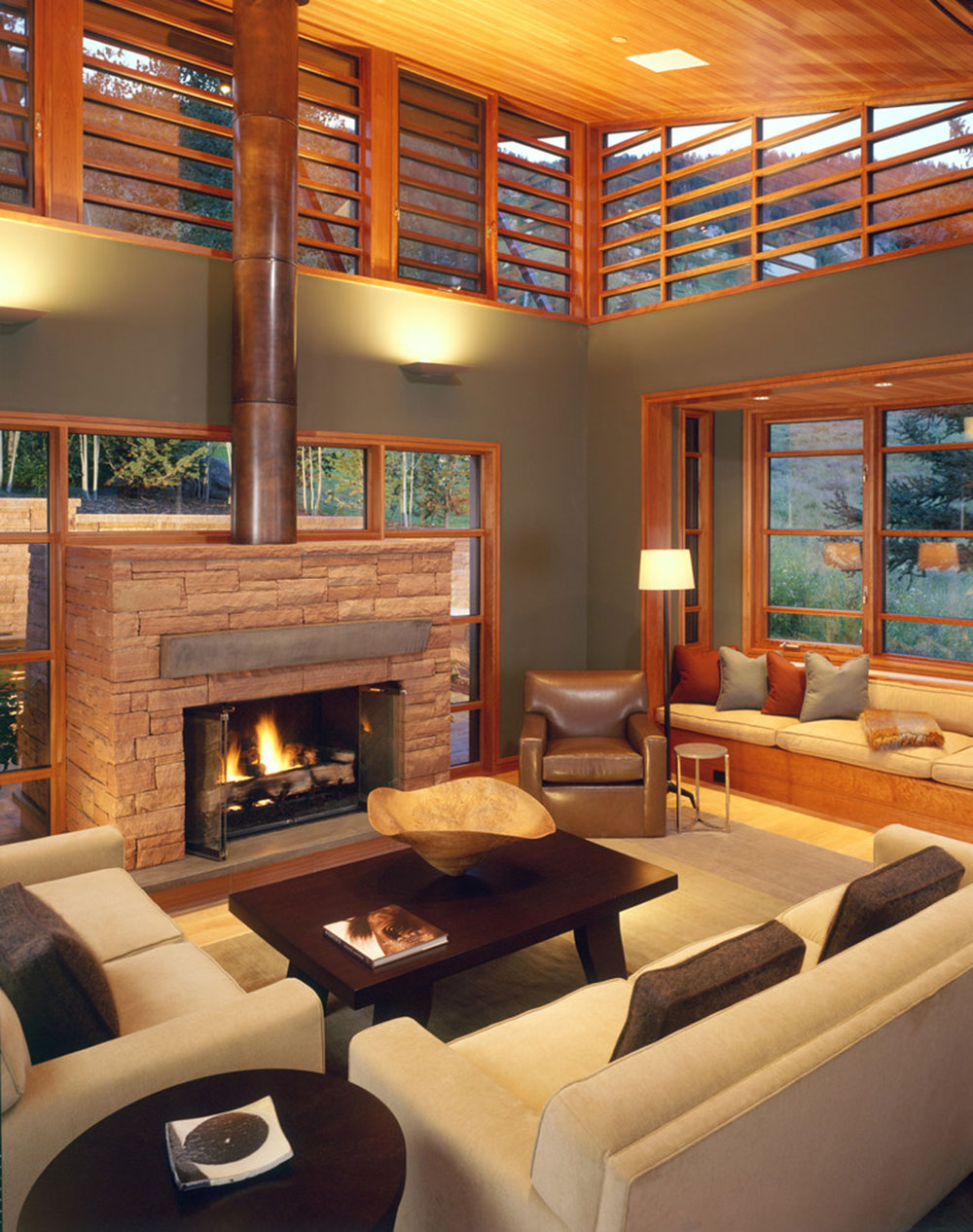 Image source: Poss architecture + planning + interior design
Image source: Poss architecture + planning + interior design
You are always welcome to introduce colors to match your wooden elements or exposed brick surfaces. An excellent idea would be to use matching colors for the walls or cladding.
Turn around and check the wood / brick surfaces. Do you own wooden furniture? Do you have an accent wall in the living room? We bet you will have a shade in a few seconds!
The color group that goes with wood and brick is quite large: it ranges from bright orange to cool, whitewashed tones.
To choose the right one, think about the feelings that the room should inspire. Better still, paint a little of the room and compare the colors to see which one actually fits.
Trim connections
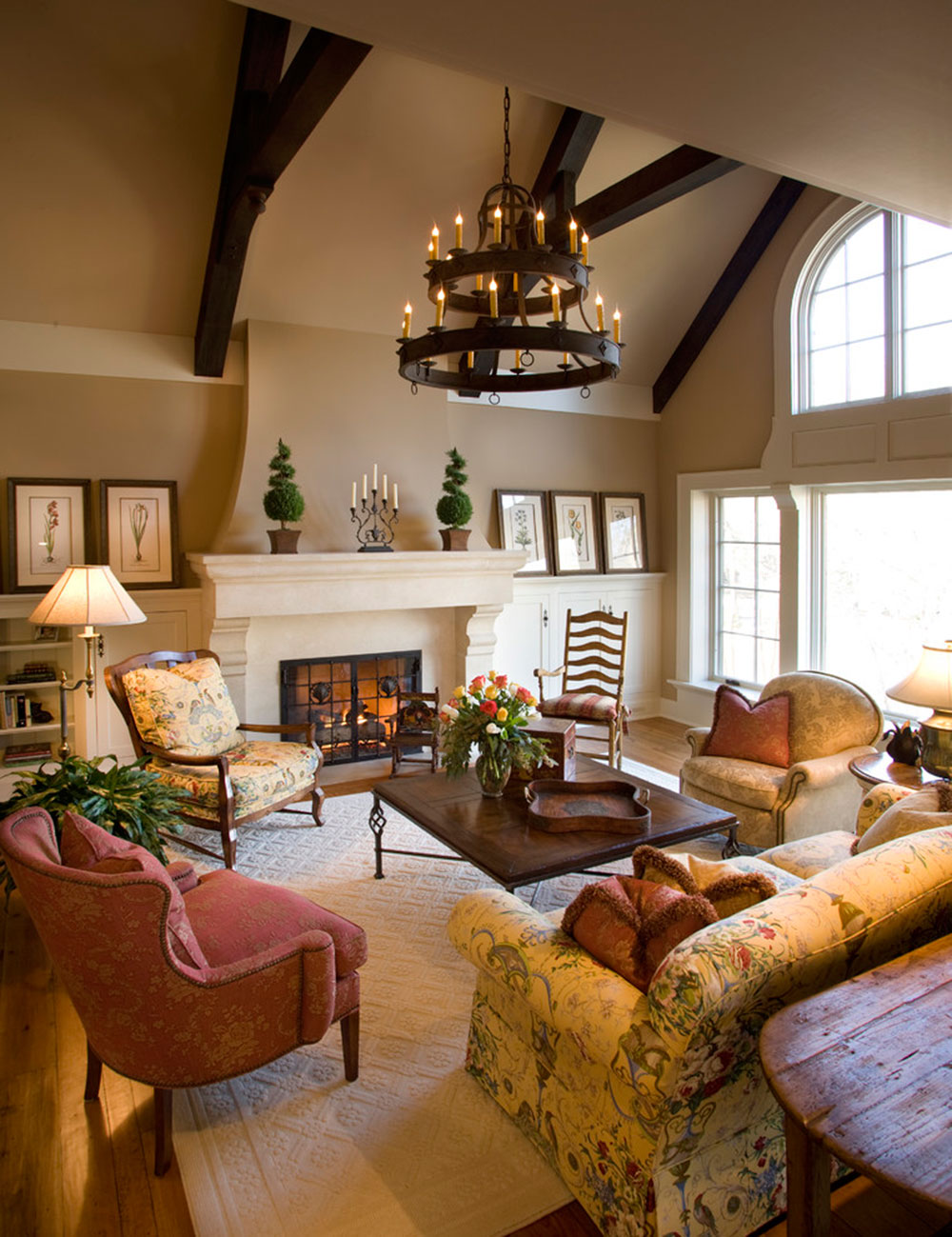 Image source: Bruce Kading interior design
Image source: Bruce Kading interior design
Spaces that allow direct transmission from one another also deserve a visual connection; something like a single “tone string” indicating that they belong to the same place.
The quickest, easiest way to achieve this result is to paint all of your cladding (moldings, doors, windows, or even cabinets) with a single color. Neutral tones like white are an excellent choice for this.
Blind tracking of magazines isn’t always good
Magazines have a strong influence on what we like or expect from our living space. They advise us on the latest trends and suggest wonderful solutions that “stay close to the heart” from the very first moment.
As great as they seem, these solutions may not be the right choice for us.
Don’t be a blind believer in trends: first of all, there are a lot of people who spent a lot of money and time getting a magazine result, but ended up with something unexpected that they don’t like.
Your living room requires your attention and ideas as it will meet your needs. This is precisely why it is best to choose the color yourself rather than following the roller designs created by Photoshop.
 Flower Love
Flower Love
